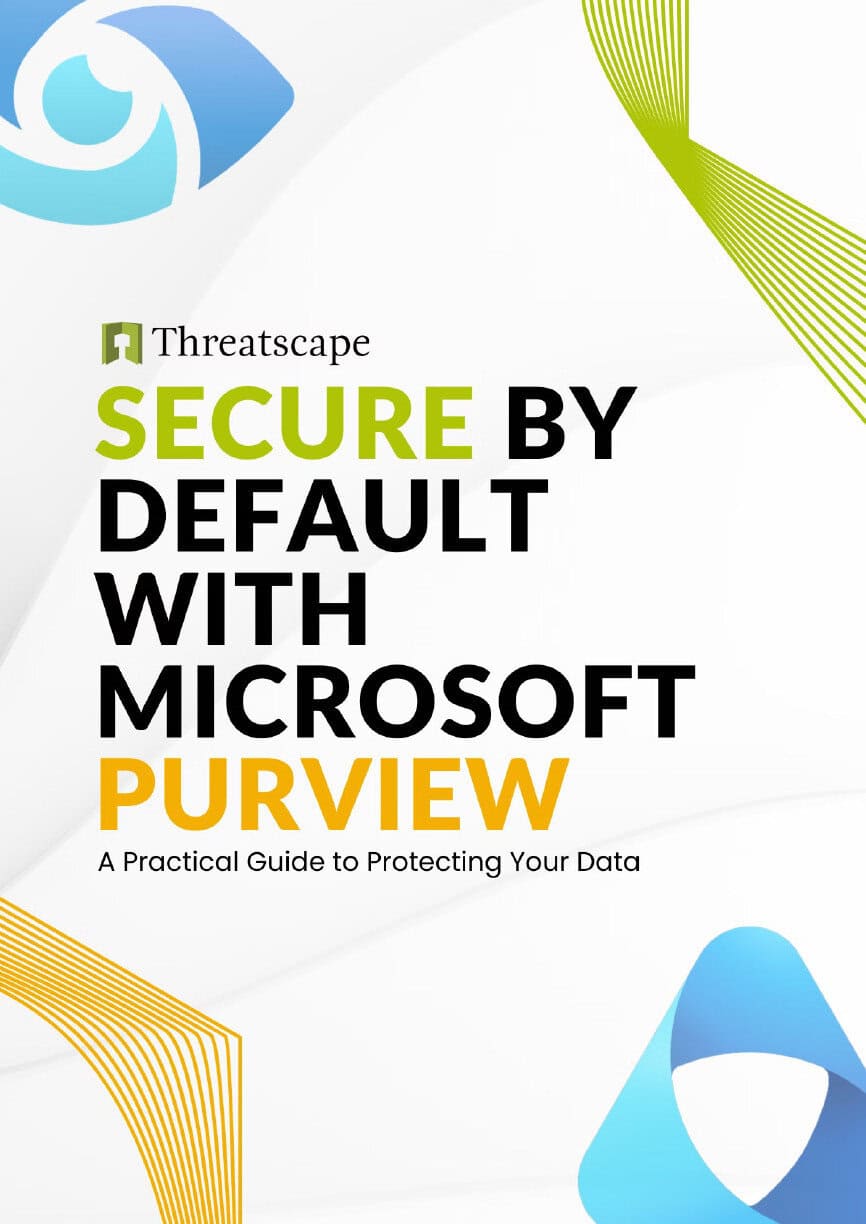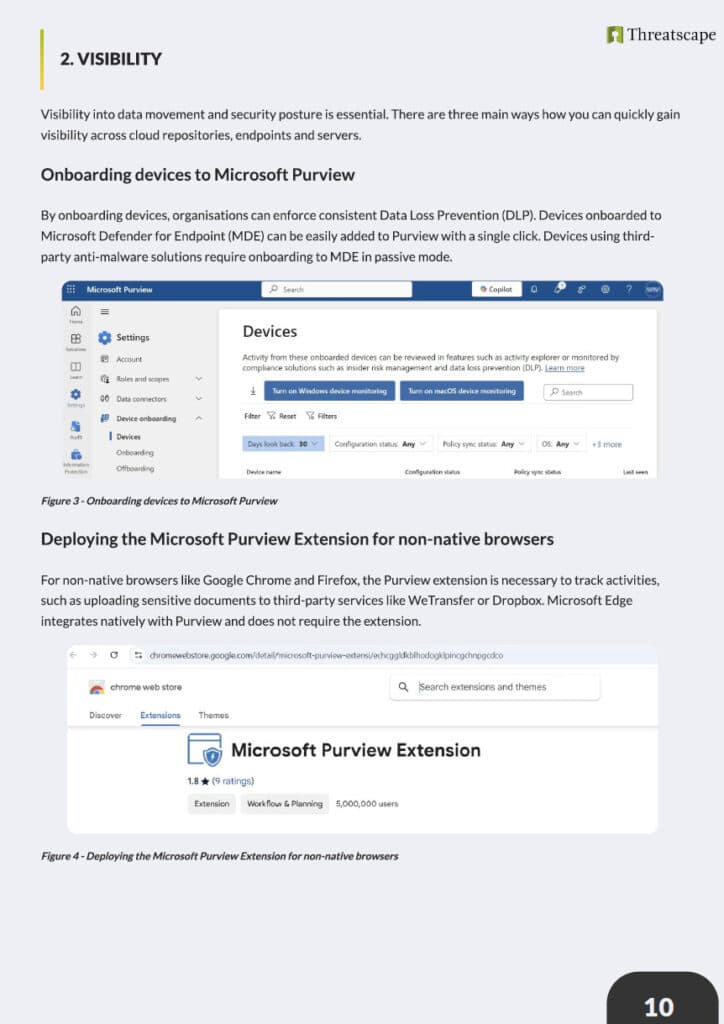eBook
Secure by Default with Microsoft Purview
A Practical Guide to Protecting Your Data
Despite its importance, Microsoft Purview is often seen as complex, leading many organisations to delay implementation. However, a closer look reveals that Purview is not as daunting as it seems and is essential in today’s threat-heavy environment, where data breaches and AI-driven risks are growing more frequent and sophisticated. Success lies not just in licensing Purview but in actively optimising its features to mitigate risks and maximise return on investment (ROI).

Your download includes:
- An overview of Microsoft's Secure By Default guidelines, and how they can be implemented to prioritise security from implementation's outset.
- The importance of getting Left of Bang, or proactive optimisation, including practical tips to optimise your Microsoft Purview tools to get the most out of your investment and capabilities.
- Properly optimising Microsoft Purview has numerous associated business benefits, and these are outlined, along with the dangers of poor optimisation.
- Ten key areas for Microsoft Purview optimisation, including actionable steps that organisations can take to ensure their Purview suite is working as intended, and expected.

Get your copy of Secure by Default with Microsoft Purview: A Practical Guide to Protecting Your Data!
Sneak preview:
While Purview’s extensive capabilities are designed to work together, their breadth can feel overwhelming for new administrators, making it difficult to know where to start. Even experienced users may not fully leverage additional features that could enhance their organisation’s data security posture.
To address these challenges and support faster adoption, Microsoft’s engineering team has developed Secure by Default deployment guides within Purview. These structured blueprints embed security from the start, reducing risks of breaches, mismanagement, and compliance gaps. By following this approach, organisations can shift from a reactive to a proactive security strategy, ensuring robust data protection in today’s AI-driven threat landscape.
Microsoft Purview’s deployment strategy follows a four-phase framework, enabling organisations to scale data protection efficiently:
- Phase 1: Foundational – Apply default sensitivity labels across all users to establish baseline protection and reduce accidental data exposure.
- Phase 2: Managed – Focus on sensitive files, such as financial records or personal data, using encryption policies and strict access controls.
- Phase 3: Optimised – Expand protection across the entire Microsoft 365 data estate, ensuring all critical data is secured against potential threats.
- Phase 4: Strategic – Implement continuous monitoring, analytics, and AI-driven refinements to enhance security measures over time.

